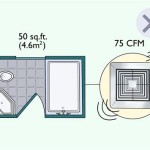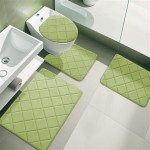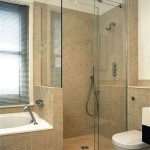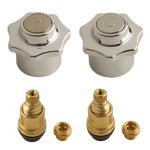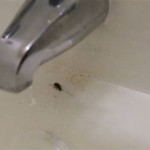Bathroom Exhaust Fans with Heater: A Comprehensive Guide
Bathroom exhaust fans with heaters offer a convenient solution for managing moisture and temperature within a bathroom environment. These units combine the functionality of a standard exhaust fan, which removes excess humidity and odors, with the added benefit of a built-in heating element for supplemental warmth. This dual functionality can significantly improve comfort, especially during colder months or in bathrooms located in areas with fluctuating temperatures.
The primary purpose of a bathroom exhaust fan, heater or not, is to ventilate the space. Bathrooms are inherently prone to high humidity levels due to showering, bathing, and other water-related activities. This excess moisture can lead to several problems, including mold and mildew growth, peeling paint, and damage to fixtures and building materials. An exhaust fan effectively removes this moisture-laden air, preventing these potential issues and maintaining a healthier and more comfortable environment.
The integrated heater provides an additional layer of comfort, particularly during cooler seasons. Instead of relying solely on central heating, which may not always adequately address localized temperature needs in a bathroom, a bathroom exhaust fan with a heater can quickly and efficiently warm the space, creating a more pleasant experience, especially immediately after a shower or bath. This localized heating can also contribute to energy savings by reducing the demand on the central heating system for the entire house.
The installation of a bathroom exhaust fan with a heater is generally similar to that of a standard exhaust fan, although electrical considerations are more significant due to the heater's power requirements. It's crucial to consult with a qualified electrician to ensure that the existing electrical wiring can safely handle the additional load and that the unit is properly grounded. Adhering to local electrical codes is also paramount to ensure safe and compliant installation.
Selecting the right bathroom exhaust fan with a heater involves considering several factors, including the size of the bathroom, the noise level of the fan, the heating capacity of the heater, and the overall design and aesthetics. Proper sizing is essential to ensure adequate ventilation and heating without excessive energy consumption. Noise level, measured in sones, is a critical consideration, especially for those sensitive to noise. Lower sone ratings indicate quieter operation. The heating capacity, measured in BTUs (British Thermal Units), should be appropriate for the size of the bathroom to provide effective and efficient heating.
Key Considerations for Choosing a Bathroom Exhaust Fan with Heater
Selecting the optimal bathroom exhaust fan with a heater requires careful evaluation of several key factors. Neglecting these considerations can result in suboptimal performance, increased energy costs, or even safety hazards. Therefore, a thorough assessment of individual needs and preferences is essential before making a purchase.
Bathroom Size and Ventilation Requirements: The first and most crucial factor is the size of the bathroom. Exhaust fan capacity is typically measured in cubic feet per minute (CFM), which indicates the volume of air the fan can remove in a minute. A general guideline is to have at least 1 CFM per square foot of bathroom area. For example, a 50-square-foot bathroom would require a fan with a minimum CFM rating of 50. Bathrooms with higher ceilings may require fans with even higher CFM ratings. Additionally, consider the layout of the bathroom and the location of the shower or tub. If the shower or tub area is enclosed, a more powerful fan may be necessary to effectively remove moisture from that specific area. It's always better to slightly overestimate the CFM requirement than to underestimate it, as an undersized fan will not adequately ventilate the space, leading to moisture buildup and potential problems. Over estimating by a large margin can lead to drafts and wasted energy though.
Heating Capacity and Efficiency: The heating capacity of the unit is measured in British Thermal Units (BTUs). The appropriate BTU rating depends on the size of the bathroom and the typical temperature conditions. A smaller bathroom may only require a heater with a lower BTU output, while a larger bathroom, especially one located in a colder climate, will necessitate a higher BTU rating. It’s also important to consider the energy efficiency of the heater. Look for models with energy-efficient heating elements and features such as adjustable thermostats or timers to help reduce energy consumption. Some models also incorporate radiant heating technology, which can provide more even and efficient heat distribution. Ensure the heater uses a UL-listed heating element and has a thermostat with an automatic overheat shutoff. Thermostat features may allow you to optimize when the heater is used to minimize electrical costs while maintaining a comfortable temperature. An efficient fan reduces energy costs and conserves electricity.
Noise Level and Sone Rating: Noise level is a significant consideration, especially for bathrooms located near bedrooms or living areas. The noise produced by an exhaust fan is measured in sones. A lower sone rating indicates quieter operation. For example, a fan with a sone rating of 1.0 is considered relatively quiet, while a fan with a sone rating of 4.0 or higher may be quite noticeable. Consider your personal tolerance for noise and the location of the bathroom when selecting a fan with an appropriate sone rating. Some manufacturers offer models specifically designed for quiet operation, often incorporating features such as sound-dampening materials and optimized fan blade designs. It is crucial to consider the typical usage patterns and the potential for disturbing others in the household when assessing the acceptable noise level. A fan with smart features may allow you to adjust the fan speed when the heater is not running, which could reduce the noise level.
Installation Considerations and Safety Precautions
Proper installation is crucial for the safe and effective operation of a bathroom exhaust fan with a heater. Incorrect installation can lead to electrical hazards, fire risks, and suboptimal performance. Therefore, it is essential to adhere to all applicable building codes, electrical codes, and manufacturer instructions during the installation process. While DIY installation may be possible for some homeowners, it is generally recommended to hire a qualified electrician to ensure safe and compliant installation, especially when dealing with electrical wiring and high-voltage appliances.
Electrical Wiring and Circuit Requirements: Bathroom exhaust fans with heaters require a dedicated electrical circuit with an appropriate amperage rating. The specific requirements will depend on the wattage of the heater and the fan. It is essential to consult the manufacturer's specifications to determine the correct circuit size and wiring gauge. The existing electrical wiring must be able to safely handle the additional load. If the existing wiring is inadequate, it will need to be upgraded by a licensed electrician. Additionally, the circuit must be properly grounded to prevent electrical shock hazards. A GFCI (Ground Fault Circuit Interrupter) outlet is typically required in bathrooms to provide additional protection against electrical shock. This is often mandated by local electrical codes. The wiring should be installed according to the latest electrical codes, including provisions for moisture protection and proper grounding techniques.
Ductwork and Ventilation: Proper ductwork is essential for effectively exhausting moist air from the bathroom. The ductwork should be sized appropriately for the fan's CFM rating. Using undersized ductwork can restrict airflow and reduce the fan's effectiveness. The ductwork should be made of rigid metal or insulated flexible ducting to prevent condensation and mold growth. The ductwork should be routed to the outside of the house, terminating at a vent cap that prevents backdrafts. Avoid routing the ductwork into the attic or crawl space, as this can lead to moisture buildup and damage. The ductwork should be installed with a slight downward slope to allow any condensation to drain away. All joints in the ductwork should be sealed with duct tape or mastic to prevent air leaks. Inspect the ductwork periodically for any signs of damage or blockage, and clean it as needed to maintain optimal airflow. When connecting ductwork to the outside of the home, ensure a proper flashing is installed to prevent water intrusion.
Safety Features and Overheat Protection: All bathroom exhaust fans with heaters should incorporate safety features to prevent overheating and electrical hazards. The unit should have a built-in thermostat that automatically shuts off the heater if it reaches an unsafe temperature. This prevents the heater from overheating and potentially causing a fire. Additionally, the unit should be properly grounded to prevent electrical shock hazards. Look for models that are UL-listed or certified by other reputable safety organizations. Periodically inspect the unit for any signs of damage or wear, such as frayed wires or loose connections. If any problems are detected, discontinue use and consult with a qualified electrician for repair or replacement. Ensure that the unit is installed in accordance with all applicable building codes and electrical codes. Prioritize models with a thermal fuse. This non-resettable safety device will blow if an over-temperature condition exists.
Maintaining and Troubleshooting Bathroom Exhaust Fans with Heater
Regular maintenance is essential for ensuring the long-term performance and safety of a bathroom exhaust fan with a heater. Proper maintenance can prevent common problems, such as reduced airflow, increased noise levels, and electrical hazards. By performing routine maintenance tasks, homeowners can extend the lifespan of their units and maintain a comfortable and healthy bathroom environment. Simple tasks such as regular cleaning can improve performance and reduce the risk of issues.
Cleaning and Dust Removal: Dust and debris can accumulate on the fan blades, motor, and vents, reducing airflow and increasing noise levels. Regularly cleaning the unit is essential for maintaining optimal performance. Before cleaning, always disconnect the power to the unit to prevent electrical shock. Use a vacuum cleaner with a brush attachment to remove dust and debris from the fan blades and vents. For stubborn dirt, use a damp cloth and mild detergent. Avoid using abrasive cleaners or solvents, as these can damage the unit. Periodically clean the vent on the exterior of the house as well. Check the vent cap regularly to ensure it opens and closes freely and that it is not blocked by debris. Cleaning schedules depend on usage and environment. Fans used in dusty climates will likely require more frequent cleaning.
Troubleshooting Common Issues: Several common issues can arise with bathroom exhaust fans with heaters, including reduced airflow, increased noise levels, and heater malfunctions. If the fan is not exhausting air effectively, check the ductwork for obstructions or air leaks. Ensure that the ductwork is properly sized and that all joints are sealed. If the fan is making excessive noise, check the fan blades for damage or imbalance. Loose screws or mounting hardware can also cause noise. Tighten any loose screws and replace any damaged parts. If the heater is not working, check the circuit breaker to ensure it has not tripped. Also, check the thermostat to ensure it is set to the desired temperature. If the heater still does not work, consult with a qualified electrician for repair or replacement. If the fan starts to vibrate more than normal, turn it off and check the mounting bracket. A loose bracket can cause vibration and noise. Also check for ice buildup in the duct preventing the vent from opening correctly.
Extending Unit Lifespan: Several steps can be taken to extend the lifespan of a bathroom exhaust fan with a heater. First, ensure that the unit is properly sized for the bathroom. Using an undersized fan can cause it to work harder and wear out prematurely. Second, perform regular maintenance, as described above. Third, avoid overloading the electrical circuit. Do not plug other high-wattage appliances into the same circuit as the fan. Finally, consider purchasing a higher-quality unit with a longer warranty. While these units may cost more upfront, they are often more durable and reliable in the long run. When appropriate, utilize the fan with smart features to reduce the amount of time the heater is operating. This can extend the life of heating elements on the fan.

Panasonic Fv 0511vh1 Whisperwarm Dc Fan Heater 50 80 110 Cfm

Broan Nutone 110 Cfm Ceiling Bathroom Exhaust Fan With Light And 1500 Watt Heater 765h110l The Home

Bathroom Exhaust Fan Heater Led Light Combo 2300 Watt 100cfm

Broan Bhf80 Powerheat 80 Cfm 1 5 Sones Heater Exhaust Fan

Infrared Bathroom Heater Exhaust Fan

Delta 80fl Heater Breezradiance Ventilation Fan Heat Combination With Lights 13 Watts 80 Cfm

Broan Powerheat 2 Sone 110 Cfm Bright White Lighted Bathroom Fan And Heater Bhfled110 At Com

Nutone 80 Cfm Ceiling Bathroom Exhaust Fan With Light And 1300 Watt Heater 765h80l

164 By Broan Ceiling Bathroom Exhaust Fan Infrared Heater 70 Cfm 2 250 Watt Bulbs 4 0 Sones Tri City S

Broan Nutone 70 Cfm Ceiling Bathroom Exhaust Fan With Light And Heater 9093wh The Home
See Also
